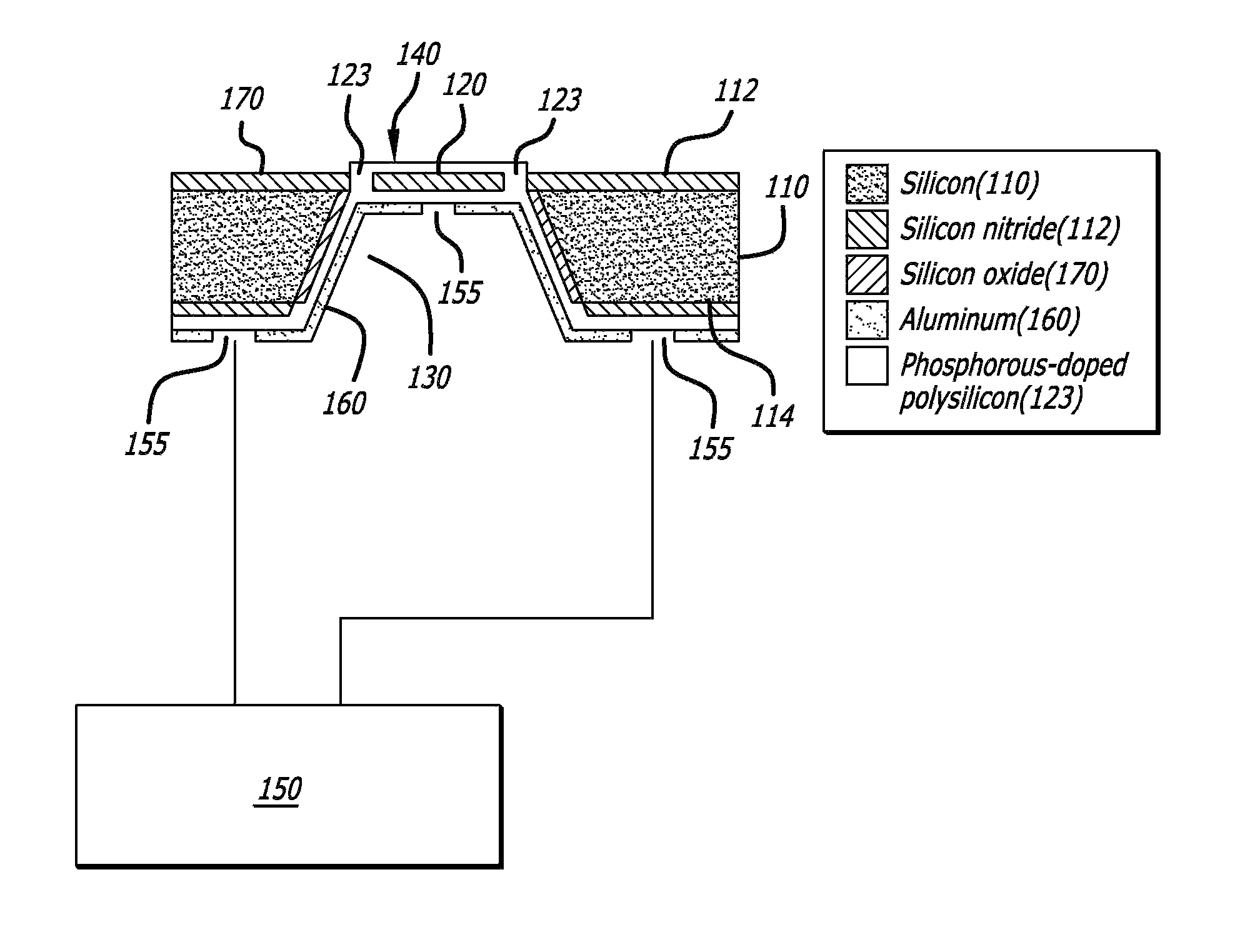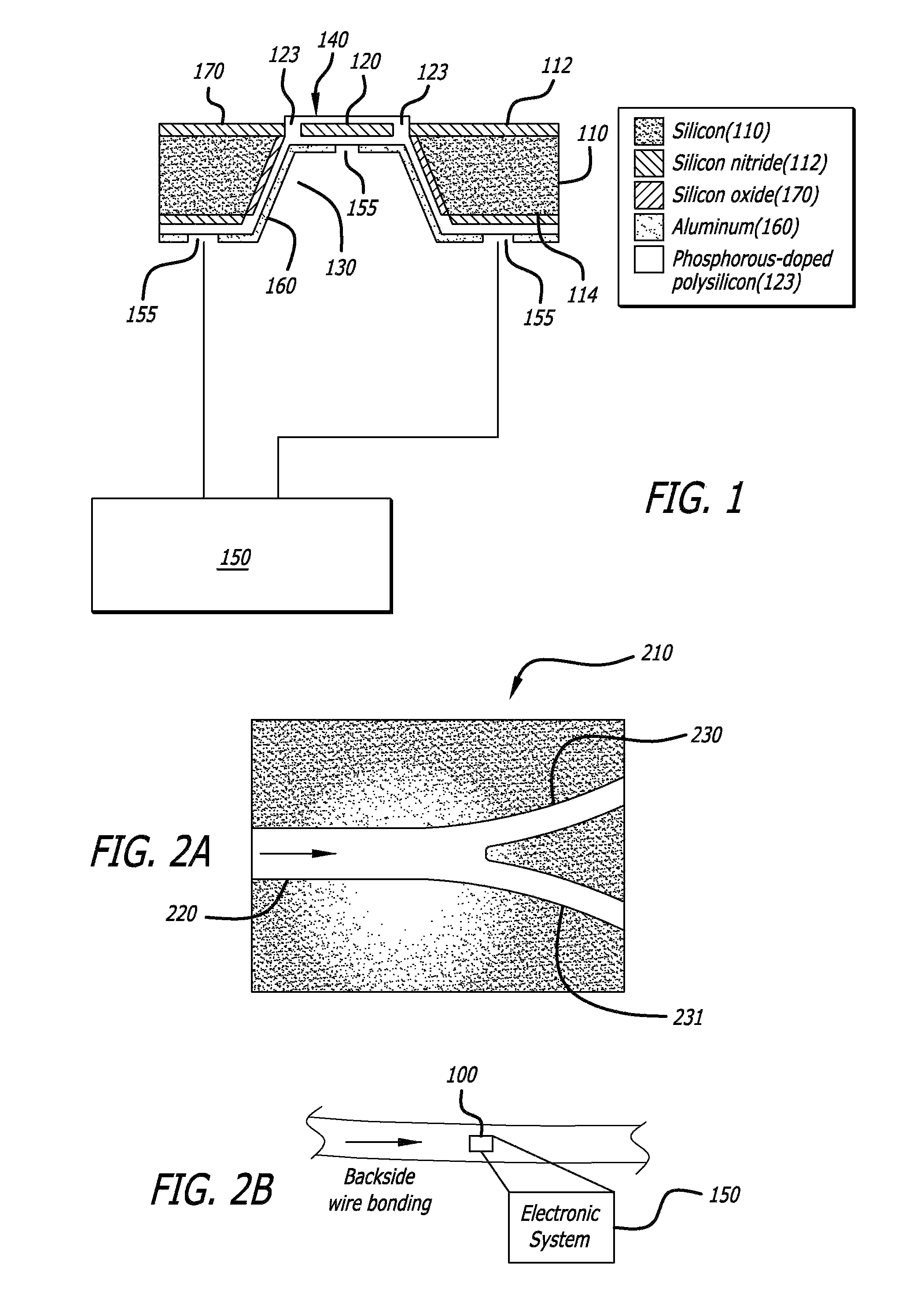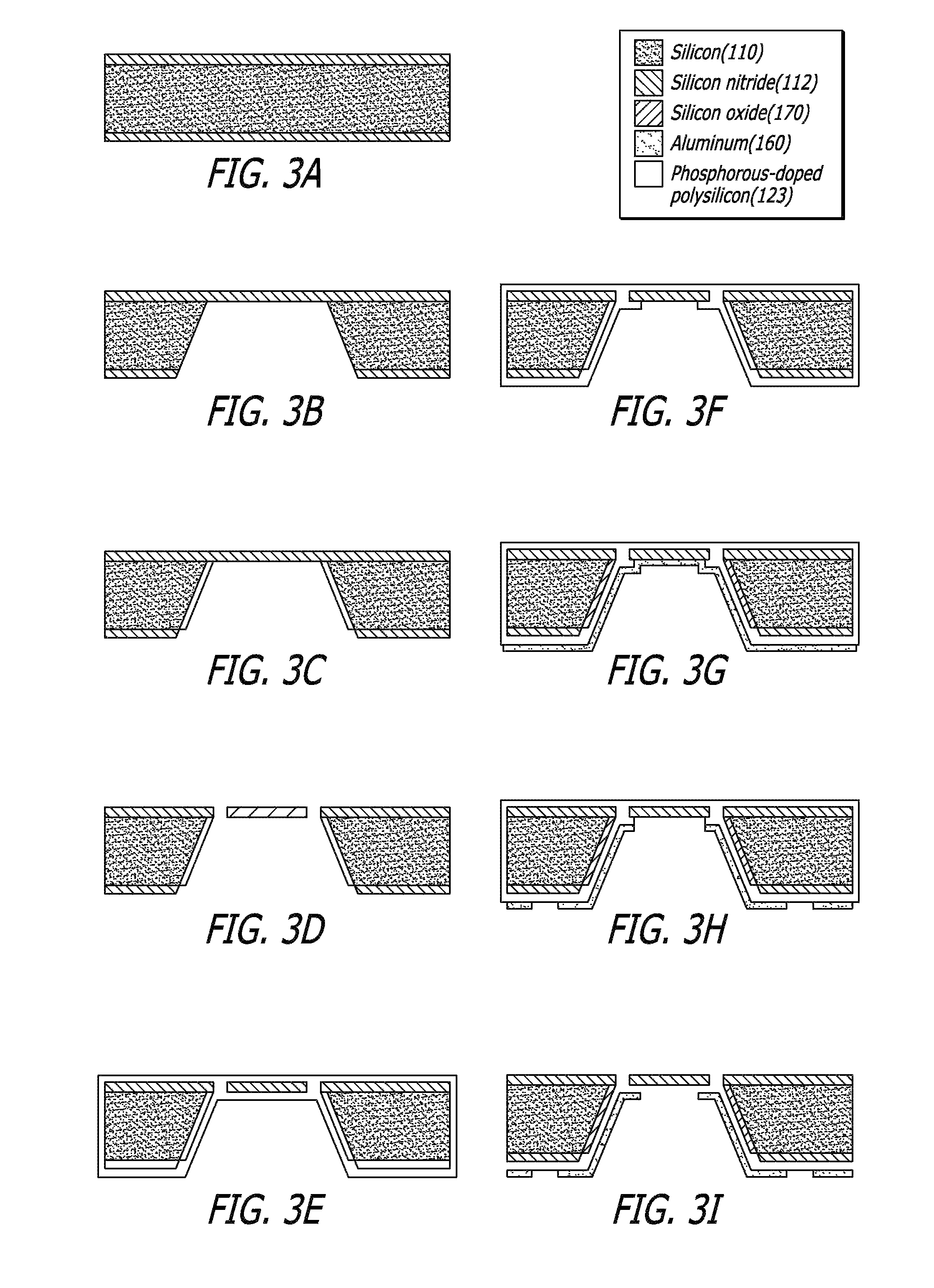MEMS vascular sensor
a vascular sensor and sensor technology, applied in the field of vascular sensors, can solve the problems of wall shear stress, in particular near-wall shear stress, remains an engineering challenge, particle image velocity velocimeter, and may have an increased noise level
- Summary
- Abstract
- Description
- Claims
- Application Information
AI Technical Summary
Benefits of technology
Problems solved by technology
Method used
Image
Examples
Embodiment Construction
[0026]A system and method are disclosed for measuring fluid shear stress with a MEMS shear stress sensor, and for fabricating the MEMS sensor. The MEMS sensor may be backside wire bonded, and may operate based on basic heat transfer principles. The backside wire bonding may insulate the micro-circuitry in the MEMS sensor from the fluid. The MEMS sensor may include an etched cavity that may improve the sensitivity of the sensor by minimizing heat conductance loss from the heat sensing component of the sensor.
[0027]FIG. 1 is an overall schematic diagram of a MEMS shear stress sensor 100, constructed in accordance with one embodiment of the methods and systems described in this disclosure. In overview, the MEMS sensor 100 may include: a substrate 110 having a front-side surface 112 and a backside surface 114 opposite the front-side surface; a diaphragm 120 overlying a cavity 130 etched within the substrate 110; a heat sensing element 140 disposed on the front-side 112 of the substrate ...
PUM
| Property | Measurement | Unit |
|---|---|---|
| temperature | aaaaa | aaaaa |
| size | aaaaa | aaaaa |
| depth | aaaaa | aaaaa |
Abstract
Description
Claims
Application Information
 Login to View More
Login to View More - R&D
- Intellectual Property
- Life Sciences
- Materials
- Tech Scout
- Unparalleled Data Quality
- Higher Quality Content
- 60% Fewer Hallucinations
Browse by: Latest US Patents, China's latest patents, Technical Efficacy Thesaurus, Application Domain, Technology Topic, Popular Technical Reports.
© 2025 PatSnap. All rights reserved.Legal|Privacy policy|Modern Slavery Act Transparency Statement|Sitemap|About US| Contact US: help@patsnap.com



